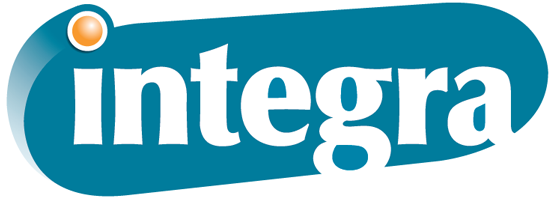Top 4 Types of Print Businesses and How to Find Your Best Fit
November 4th, 2023 | 8 min read

Have you come to the conclusion that it’s time to outsource your print projects to someone who knows the industry and can focus their full attention on the print project at hand? If you’ve started your research with some kind of “printers near me” or “print professionals for my project” inquiry, there’s a high chance you started noticing that not all print businesses are created equal.
In fact, some don’t function the way you would need them to at all. Just because they put some ink on some paper doesn’t make them the right fit, afterall.
So what are the categories, and how do they compare to one another? Are they really all that different?
The short answer is yes, they’re inherently different in huge ways that can tremendously impact your experience. But don’t worry — while the research can feel overwhelming in the beginning, knowing the print industry business models will help.
By the time you’re done reading this blog post, you should be able to figure out which models would or could work for you and weed out the rest. Since you’ll know a bit about what you can expect from each type of printer, you should be able to narrow your options down to a more manageable list and work from there.
Before we get into the categories, we want to make it clear that Integra Graphics Synergy is a print broker, or print management company, that has been in business since 2005. It stands to reason that we do tend to favor the broker model and feel that it works well for the widest range of print buyers. That said, we know that our structure isn't the right fit for every single customer, so our goal is to stay as neutral and objective as possible to help you decide based on your own unique needs and circumstances.
With that stated, let’s go ahead and lay out the top professional printer categories — the four most common models by which the vast majority of companies in the industry categorize themselves.
1. Online Printers
Online printers are popular for their fairly low prices and do-it-yourself qualities. If you choose to work with one, you’ll need to upload your design or work within the confines of a site to build a cart of items, then order the products and wait for delivery.
Some businesses like to work with online printers because they want to handle all design and order processing themselves and don’t mind the potential for errors or a final product that doesn’t look the way they expected. In essence, they don’t need to rely heavily on print professionals, industry expertise or white glove customer service. Instead, they want to get in, get out and have their prints on the way.
This business model can be a difficult one to navigate if you’re not used to print, paper and ink terminology. You can see a digital representation of your work on the screen, but you won’t usually get samples or know for sure that the colors will be just right and the margins will be clean.
When It’s a Good Fit
If the job you have is a quick, one-off project and you just want to click a few times and expect a package, online printers might be for you. Because they often ship from overseas, they can provide low prices and mass service to as many customers as show up to the site.
When It’s a Bad Fit
If you run into any issues with an online printer, you’ll need to contact customer service the same way you would if an Amazon order never showed up. In other words, you won’t have a designated representative or a direct line to production. If those factors are important in your print must-haves, you should move on from this category.
2. Print Houses
Also known as print warehouses, printing plants or just plain “printers,” print houses keep all or most of their equipment on-site. They put time, effort and funding into sourcing, purchasing and maintaining their print equipment, then employ professionals who specialize in the type of gear they keep at their plant.
Working with a print house comes with a few great advantages as well as some limitations. Since they keep their machinery in-house, they’re limited by the square footage of their facility or facilities. As a result, most print houses have specialties and particular capabilities. Some might be great at printing and binding full-length books, for example, but not offer flyers or postcards. Others have mailing services on-site and can manage your direct mail, but may require you to outsource your catalogs and have them sent to their site first.
When It’s a Good Fit
If you need a particular type of print work done on a regular basis and don’t stray much from that order, a print house might be a great fit for you. Take the book printer we just mentioned. If your company works on a digital medium more than anything else but puts a new hardcover book out once a year, you’d do well with a book-focused print house.
Another limitation to keep in mind with print houses is their staffing and equipment output. Some printers get extremely busy during certain seasons and can’t take on new jobs, especially with tight timelines. Not a problem if you’re printing one book a year on a dedicated schedule — only an unforeseen incident like a fire or equipment failure would get in the way of something that’s been on the schedule year after year.
When It’s a Bad Fit
If you want to get postcards printed and mailed, a book published every few years, some t-shirts branded for your promotional events and a few signs made for your building’s exterior, this model might not be for you. You'd need to find a print house with a wide range of capabilities and a fairly large facility, and you’d have to make sure their timelines could match yours. In all likelihood, you’d need to contact more than one print house and establish separate terms, payment, scheduling and plans with each one of them.
That’s a headache you don’t need, which is why we recommend the next print model, print brokerage, for companies with diverse print demands.
3. Print Brokers
Another term that many feel more adequately represents this segment of print professionals is “print management company.” This model is one that places the customer before the equipment, casting a wider net by garnering strong connections with print houses and some online printers to ensure they’re able to meet as wide a range of print needs as possible without a drop-off in quality or timeliness.
Print brokers have a variety of strategies and methods that can get your work done on time and within budget, not the least of which being a strong relationship with trade-only printers who don’t take direct orders from customers. They also leverage printers that do mass batch printing, which is one of the ways they’re able to keep pricing competitive without a loss in quality.
Remember to do your due diligence before opting to work with a print broker. The bottom line is that they’re only as good as the relationships they’ve built with their vendors. If they’re brand new to the business or don’t have a good reputation, they’re unlikely to serve you as well as a well-established print management company with connections across a wide range of specialties and locations.
When It’s a Good Fit
The bread and butter of most print management companies is their customer service. They can work with any type of printer in any of these categories, and they’ll do whatever they need to do to make sure your project shows up looking just how you expect it to, when you expect it to, without hidden fees. That means they manage issues that come up, pivot to new vendors if equipment fails at a current one and keep you looped in on each of your projects from conception to delivery and beyond.
If you need hands-on customer service for a diverse range of printed materials, your best bet might be a print broker. They’ll work to keep your prices low, quality high and timeline right on track no matter how varied your requests get.
When It’s a Bad Fit
Does your company print one or two types of materials and plan to stick to it? A print broker can certainly procure your materials and do so at a fair price, but you won’t necessarily reap the major benefits a broker has to offer in this case. These companies excel at coordinating and negotiating print needs with a range of variables, managing the logistics to make the lives and jobs of print buyers much easier. You’ll still get good results with limited projects, but it might be unnecessary to lean on a print management business to deliver those results.
Furthermore, if you need something same-day and it’s a small batch, a print broker with a vendor connection on every block will still struggle to make that happen without a spike in costs. That’s not saying it can’t be done, but it’s unlikely, especially if you do not already have an established relationship with a print management business. In this case, you may want to look into the next category, which we call “hybrids.”
4. Hybrid Models for Print Services
This category is a bit different from the others in that it doesn’t fit as neatly into a specific mold. As its name suggests, a hybrid print model generally takes the form of an office supply shop or mail house. Think Staples or UPS. You’ll order your prints online in most cases, taking care of the design work and file submission on your own. Then, you’ll click “print” and pick your work up in as little as a day.
Hybrid, office-supply-style print services do come with some level of customer service if you need it. You can request to work with someone on-location if you’re having trouble, and you’ll gain access to an employee with a moderate amount of print knowledge — but it’s unlikely to be their primary specialty.
These types of printers can be quick and provide a day-saving solution, but they also have inherent limitations. First, you’ll need to make sure you order before a certain time of day if you want same-day turnaround. Next, you’ll usually need to pick your project up yourself, so make sure your vendor is open when you can make the trip as well as near enough to your location to make sense.
Finally, you’ll face quantity restrictions and limited print options if you plan to reap the top benefit of these locations — speed. Most hybrid print departments won’t provide same-day or next-day service for orders that get anywhere close to triple digits.
Because you’re getting quick service on specialized equipment, you’re likely to pay a premium with this type of printer. Take advantage of sales if you can, and stick with small batches if you’re choosing this route out of necessity.
When It’s a Good Fit
Hybrid models could be a great fit if you’re working on a last-minute basis and need same-day turnaround for a small-batch order. Say you need 200 business cards for a trade show, and it totally slipped your mind. The trade show is coming up, and you really need to make sure that card stand is filled for potential customers who pass by your table. Consider turning to a local office supply shop for a quick fix.
When It’s a Bad Fit
Do you need a large job taken care of, with more than 1,000 copies in the order? What about careful customer service or help through the design and file submission stages? Does your project fall around the holidays when lots of office supply shops change their open hours? Will your project require nuanced or diverse print applications? In any of these cases, you may want to consider a different model.
Select the Print Model That Will Meet Your Current and Future Needs
It can be an extremely stressful time, choosing someone to handle your print work so that it meets the expectations of your customers, boss, CEO and others with whom it will cross paths. You have to weigh the most critical factors to your job right now — like budget and timeline — with those of your future print needs to avoid wasting time or building a relationship with a bad-fit service provider.
We get it. This type of decision is never easy. Fortunately, as we hope you’ve come to realize here, the print industry has several strong business models to offer. Understanding these professional printer categories is the first step toward choosing a fit that will not only serve your needs now, but continue to match them in the future.
Now that you have a good idea of the professional print categories available to you, you’re well-prepared to make a fitting decision and take your research to the next level. If you happen to be leaning toward the print brokerage model, you may even be wondering what it’s like to work with Integra Graphics Synergy, and we welcome you to read about us to find out!
If you have any general questions during your decision phase and wish to speak with a professional who has been in the industry for years, click below to reach out to one of our representatives. Whether you're leaning toward the print management model or going a totally different route, we'd be happy to help answer your questions and assist in your explorations.
Topics:


